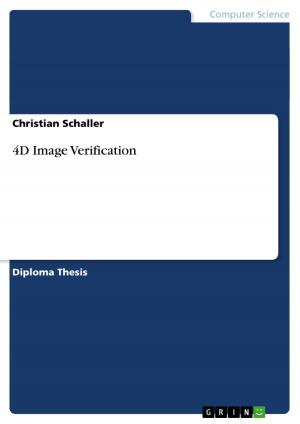Questions on International Economic Law and Institutions
Nonfiction, Reference & Language, Law, Business| Author: | Harald Löberbauer | ISBN: | 9783638527699 |
| Publisher: | GRIN Publishing | Publication: | July 28, 2006 |
| Imprint: | GRIN Publishing | Language: | English |
| Author: | Harald Löberbauer |
| ISBN: | 9783638527699 |
| Publisher: | GRIN Publishing |
| Publication: | July 28, 2006 |
| Imprint: | GRIN Publishing |
| Language: | English |
Scientific Essay from the year 2004 in the subject Law - Civil / Private / Trade / Anti Trust Law / Business Law, grade: 1, Diplomatic Academy of Vienna - School of International Studies (Vienna School of International Studies), course: International Economic Law, 12 entries in the bibliography, language: English, abstract: This paper is basically concerned with two major questions, which will be pointed out in the following. Therefore the researach is divided into two parts. Very specific questions are written down and the answers are given to the questions in the following. Therefore there is no table of contents necessary due to the fact that the paper is very much based on law. The research is based on empiric analysis of the topic. Question 1 The General Agreement on Tariffs and Trade of 1994 (GATT 1994), which entered into force on 1 January 1995, replaced the General Agreement on Tariffs and Trade of 1947 (GATT 1947). Supporting your answer with relevant provisions of WTO agreements, as well as WTO jurisprudence (dispute settlement reports), discuss the following issues: (a)The relationship between GATT 1994 and GATT 1947; (b)The place of GATT 1994 in the WTO Agreement; (c)The structure of GATT 1994; (d)The relationship between provisions of GATT 1994 and provisions of other agreements found in Annex 1A (support your answer with examples of specific provisions); (e)The significance of certain GATT provisions, which have not been developed in other agreements found in Annex 1A. Question 2 The European Hormones Case. Analyze the case: (a)The parties to the dispute and the facts of the case. (b)The issues in question. (c)The WTO agreements and provisions involved. (d)A discussion of the reasoning applied by the Appellate Body. Discuss whether the Appellate Body upheld the panel's findings and interpretations and if not, why did it modify or reverse them? Do you agree with the Appellate Body's approach?
Scientific Essay from the year 2004 in the subject Law - Civil / Private / Trade / Anti Trust Law / Business Law, grade: 1, Diplomatic Academy of Vienna - School of International Studies (Vienna School of International Studies), course: International Economic Law, 12 entries in the bibliography, language: English, abstract: This paper is basically concerned with two major questions, which will be pointed out in the following. Therefore the researach is divided into two parts. Very specific questions are written down and the answers are given to the questions in the following. Therefore there is no table of contents necessary due to the fact that the paper is very much based on law. The research is based on empiric analysis of the topic. Question 1 The General Agreement on Tariffs and Trade of 1994 (GATT 1994), which entered into force on 1 January 1995, replaced the General Agreement on Tariffs and Trade of 1947 (GATT 1947). Supporting your answer with relevant provisions of WTO agreements, as well as WTO jurisprudence (dispute settlement reports), discuss the following issues: (a)The relationship between GATT 1994 and GATT 1947; (b)The place of GATT 1994 in the WTO Agreement; (c)The structure of GATT 1994; (d)The relationship between provisions of GATT 1994 and provisions of other agreements found in Annex 1A (support your answer with examples of specific provisions); (e)The significance of certain GATT provisions, which have not been developed in other agreements found in Annex 1A. Question 2 The European Hormones Case. Analyze the case: (a)The parties to the dispute and the facts of the case. (b)The issues in question. (c)The WTO agreements and provisions involved. (d)A discussion of the reasoning applied by the Appellate Body. Discuss whether the Appellate Body upheld the panel's findings and interpretations and if not, why did it modify or reverse them? Do you agree with the Appellate Body's approach?















